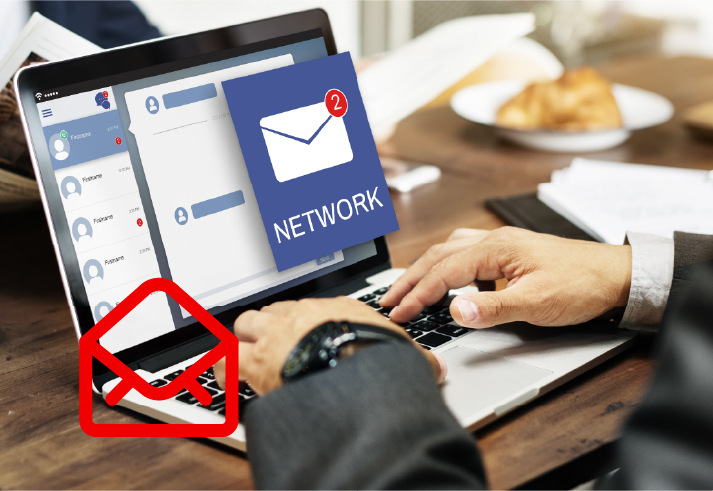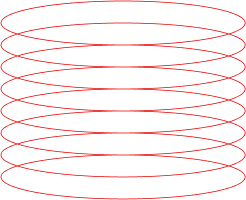Exchanging information in today’s world might tempt us to take sending emails for granted. While it is true that nowadays we can send and receive emails super quickly, the actual process behind that is more complicated and it runs with the help of email servers. These are the bedrock of online communication, so it’s important to know what’s the deal with them and learn how they work.
What is an email server?
In simplest terms, an email server, also known as mail server, is a system that sends and receives emails. Just like any other server, it routes information, in this case, emails. Every email that is sent passes through a series of mail servers along its way to its intended recipient, just like a postman would get from street to street until he reaches your address.
Email servers use the IP addresses attached to emails and the corresponding DNS system to make sure the message is delivered to the correct recipient. Mail servers are responsible either for passing along an outgoing email or for receiving an incoming email.
Types of email servers
Before getting to know how they work, we must first have an idea of the two types of email servers. As we mentioned above, mail servers can be broken down into outgoing mail servers and incoming mail servers.
These two types of mails operate onto different sending and receiving email protocols, as follows:
- Outgoing mail servers will send emails via SMTP, or Simple Mail Transfer Protocol. SMTP is the standard, most commonly used protocol for any outgoing mail server. When someone sends an email, the outgoing server gets to work and the SMTP will handle that request. In order for the SMTP to work properly, the server needs data from the user, such as the ISP’s (Internet Service Provider) SMTP server name, both the recipient’s, and sender’s email addresses and the content of the email.
- Incoming mail servers can operate via POP (Post Office Protocol) and IMAP (Internet Message Access Protocol). These are slightly different in their purpose, so let’s discuss them.
In essence, whenever the incoming mail server retrieves emails through POP, it will download the emails locally, onto your device’s storage, but unlike IMAP, they cannot be synchronized with multiple devices and kept on the servers. This is why POP then deletes the emails from the outgoing mail servers once they have been downloaded on your local storage.
IMAP is also responsible for fetching incoming emails. When you choose to view your emails via IMAP, this protocol will help retrieve emails from the outgoing servers (the ones that send the emails) and deliver them to the recipients’ inboxes, while also keeping them in the server. Basically, whenever you log into your mail client, IMAP will retrieve the emails you are supposed to get and send them to your mail client.
So, the main difference between those two protocols is where the incoming emails are stored. POP stores the received email onto your device, then deletes it from the server. By contrast, if the server uses IMAP to retrieve the emails, those emails will be kept on the respective server, allowing you to access them from different devices, in a cloud-fashioned way.
Each protocol has its advantages and disadvantages. While IMAP spares you the hassle of storing tons of emails locally, you risk hitting the limit cloud space of the server or account quota. When it comes to POP, it can greatly help with freeing some more storage space on the server and provide some extra privacy, but it’s difficult to configure and you even risk losing your emails forever, should you delete them from your device.
It’s up to you to decide what kind of protocol works best for you. However, IMAP has become the more preferred choice worldwide, as POP is slowly becoming obsolete.
Imagine you are placing an order. Your order will be sent to the destination hub. Then, the courier will pick it up from that hub and deliver it to your address. It’s an oversimplification, of course, but this is pretty much the essence of how emails are handled. Next, we will talk about mail clients and break down the whole email delivery process step by step.
What is a mail client?
While email servers are the hardware component responsible for sending and receiving emails, an email client simply sends, receives, and organizes mail for one specific user at a time. There are many different mail clients, Yahoo, Gmail, and Outlook being among the most popular.
Such clients can be web-based or software you install on your device. Depending on the protocol in use, they would, for instance, allow you to locally store the mails in your inbox or directly access the mail via client-server (cloud-like) synchronization. This, too, implies the use of POP or IMAP. Web-based clients, like Gmail or Yahoo, operate via IMAP only, whereas dedicated applications for services like Outlook or Thunderbird will allow you to choose what type of protocol you want the receiving server to use: POP (local storage only) or IMAP (server storage and cross-device synchronization)
How do mail servers work?
Now that we’ve covered the basics of mail servers and protocols, it’s time to put them into context. There are roughly 4 steps involved in the emailing process.
Step 1: After you’ve composed and sent your email from the mail client of your choice, the email will first go to the outgoing mail server and prepare it for delivery through SMTP. Here, the server will check the DNS records to translate the domain names used in the mail into the IP addresses used to redirect the mail to the correct destination.
Step 2: The outgoing server further processes the recipient’s email address. If both the sender and recipient use the same domain, the email will be directly sent via SMTP to the correct receiving server.
Step 3: If the email needs to be delivered to a domain or an incoming mail server in a different network, the outgoing server will take additional steps and route the email along a series of other unrelated outgoing servers until it arrives at its destination.
Step 4: As the email finally finds its way to the correct incoming server, that server will use either IMAP or POP to retrieve and send it to your device. From there, the email can be accessed in the inbox of the mail client you are using.
All of this happens within seconds!
Why are mail servers so important?
Quick and reliable email exchange would not be possible without email servers. Whether you’re sending or checking your emails from your phone, on your desktop, or by using a software solution, your email is handled by both incoming and outgoing email servers.
Such systems are very important for correct email delivery. For example, without them, you would only be able to send emails to people whose email address domains matched your own.
In addition, mail servers can also encrypt the transfer of emails, a must-have advantage for every company and business that works with high volumes of sensitive data. To do just that, some mail servers and mail clients can also provide additional security features to guard against cybersecurity attacks.
In a nutshell
Email delivery is handled by both outgoing and incoming email servers. They are responsible for processing the sending and receiving requests and making sure the emails are delivered to the right recipients.
Outgoing mail servers most usually employ SMTP protocol to process and deliver your email, while incoming mail servers receive and land the email in the correct inbox via POP or IMAP. Email servers are great because they process huge amounts of data from all around the world with minimal requirements: an IP address and a domain.






